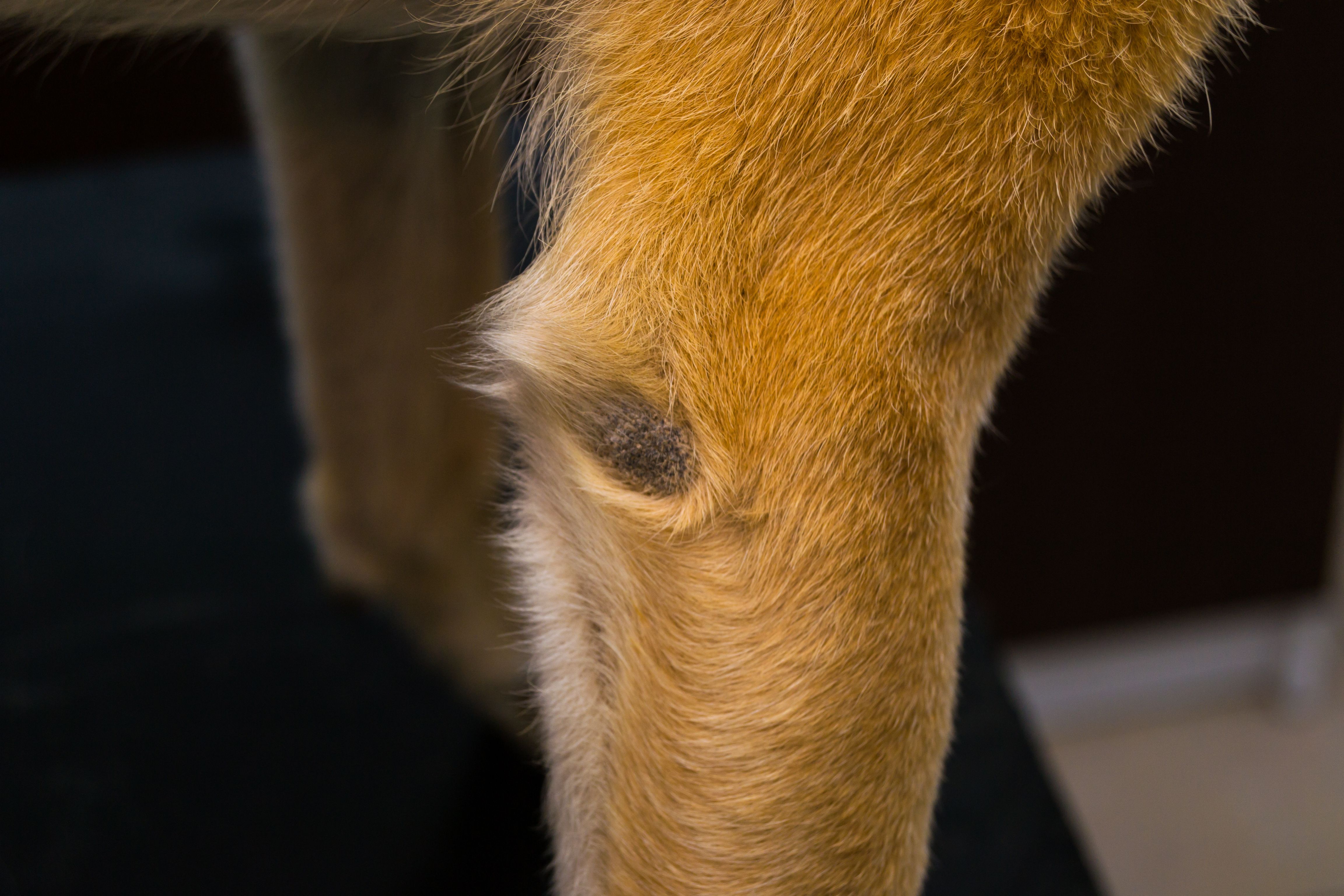Optimizing canine health with pyoderma treatment
Veterinary practitioners have access to published research for aiding their care of dogs with this dermatologic condition
Photo: Todorean Gabriel/Adobe Stock

Pyoderma, in general, refers to a bacterial infection of the skin. In particular, superficial pyoderma encompasses infections that primarily involve the outermost layers of the skin. Similarly, mucocutaneous pyoderma is a subset of superficial pyoderma, where the infection affects both the skin and mucous membranes. Mucocutaneous pyoderma can include regions such as the mouth, nose, genital areas, and other moist areas with mucous membranes.1-3 Understanding the specific type of pyoderma, whether it is superficial, deep, or mucocutaneous, is important to tailor appropriate treatment strategies.
In dogs, mucocutaneous pyoderma can manifest as redness, inflammation, pustules, and ulceration at the sites where mucous membranes and skin intersect. Published research is a useful resource concerning pyoderma.
In one controlled study, investigators advocate for using antibacterial agents with proven antistaphylococcal efficacy. Results of this study also showed how daily topical chlorhexidine shampoo and solution can resolve canine superficial pyoderma just as effectively as systemic amoxicillin-clavulanic acid. Thus, because of increasing antimicrobial resistance, topical antimicrobial therapy is a beneficial alternative to systemic therapy that can be implemented and monitored at the general practice level.1
Authors of another published investigation discuss treatment challenges, highlighting the emergence of methicillin-resistant Staphylococcus.2 This resistance complicates antibiotic selection, leading to the consideration of immunomodulators like bacterins as potential adjunctive treatments.2 Despite their potential, further research is needed on their mechanisms of action.
A third recent review emphasized the prevalence of superficial pyoderma in dogs and the need for effective treatment options. Topical formulations ranging from shampoos to sprays are the primary modality for treating this infection in dogs. Shampoos are one of the most commonly recommended therapies because of their ability to treat large areas of fully-haired skin. However, the outcome of shampoo therapy depends on factors such as the dog's temperament, breed, pet–owner relationship, climate and season, shampoo technique, and client adherence. Creams, gels, lotions, and ointments cater to localized lesions and specific skin conditions, with considerations for their viscosity, moisturizing effects, and suitability for different skin areas.3
To optimize the effectiveness of topical formulations, precautions are necessary to prevent the patient from licking the product off. Veterinarians recommend clipping hair and cleaning affected areas to ensure the active ingredient's proper reach, though glabrous (non-hairy) areas may not require hair clipping. The frequency of shampoo therapy depends on the case, with general recommendations of 2 to 3 times per week until 7 days after clinical resolution, followed by weekly applications. Topical antibiotics such as fusidic acid, gentamicin, mupirocin, and silver sulfadiazine, for localized lesions and are available in various formulations.3
The exploration of pyoderma in dogs reveals the significance of categorizing infections based on their depth and mucocutaneous involvement, to tailor effective treatment approaches. The collaborative efforts of veterinarians, researchers, and practitioners are essential to stay ahead in addressing the complexities of canine pyoderma and ensuring the well-being of our furry companions.
Ava Landry is a 2026 PharmD candidate studying veterinary pharmacy at the University of Connecticut in Storrs.
References
- Borio S, Colombo S, La Rosa G, De Lucia M, Damborg P, Guardabassi L. Effectiveness of a combined (4% chlorhexidine digluconate shampoo and solution) protocol in mrs and non‐mrs canine superficial pyoderma: A randomized, blinded, antibiotic‐controlled study. Veterinary Dermatology. 2015;26(5):339. doi:10.1111/vde.12233
- Diaz S. Pyoderma in dogs and cats - Integumentary System. MSD Veterinary Manual. December 5, 2023. Accessed January 21, 2024. https://www.msdvetmanual.com/integumentary-system/pyoderma/pyoderma-in-dogs-and-cats.
- Gomes P. Topical Treatment of Canine Superficial Pyoderma. Today’s Veterinary Practice. January 8, 2024. Accessed January 21, 2024. https://todaysveterinarypractice.com/dermatology/topical-treatment-of-canine-superficial-pyoderma/.